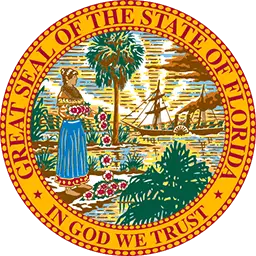…
There are nearly 30 accredited physical therapy assistant schools in Florida that award diplomas. Most of the programs involve 70-80 credit hours, which take about two years to complete.
In addition to satisfying the education requirements, a prospective PTA must complete clinical rotations and obtain a state license. No professional work experience or on-the-job training, other than that obtained while attending school, is necessary to qualify for an entry-level position.
You Might Also Like:

This agency is made up of seven members whom the governor appoints and the Florida Senate confirms. Five of the members are licensed physical therapists who practice in the state and have at least four years of experience. One member may be a full-time instructor in a physical therapy program at a Florida postsecondary school. The other two members are state residents who have never held licenses in the field.
This board ensures that PTAs meet minimum requirements in terms of education, training, safety, and other considerations. It licenses, monitors, disciplines, educates, and rehabilitates practitioners.
To become a physical therapy assistant in the Sunshine State, the first requirement is a high school diploma or GED. The next step is to enroll in an accredited education program that has earned the approval of the Commission on Accreditation in Physical Therapy Education (CAPTE). Other schools do not offer the curriculum and training necessary to qualify their graduates for Florida licensure.
Most PTA associate of science degree programs involve classes, labs, and clinical experiences. There are generally certain core courses, as well as a wide range of electives. For instance, students may pursue their personal areas of interest by taking classes in cold and hot therapies, electrical stimulation, massage therapy, and orthotic devices. Programs also usually feature about 16 weeks (500-600 hours) of clinical rotations in hospitals, nursing homes, or rehabilitation centers.
Many students pursue specialties in certain clinical fields that align with their personal interests and career goals. The American Physical Therapy Association (APTA) certifies physical therapist specialists in seven areas, including aquatic, pediatric, cardiovascular, and neuromuscular therapy.
To qualify for certification, applicants must belong to the APTA, have five years of on-the-job experience, and earn a specified number of continuing education credits that varies according to specialty. In addition, they need to present letters of reference and show proof of contributions to the profession.
To practice in the state, a professional in this field must obtain a license. This entails successful completion of the National Physical Therapy Exam. The CAPTE, as well as a Candidate Handbook, help prepare students for the test.
There are fees for applying for the exam online, and for taking it at one of a number of sites across the state. The test’s 200 questions cover physical therapy data collections, interventions, safety and protections, therapeutic modalities, and diseases and conditions that affect treatment. A score of at least 600 on a scale of 200-800 is necessary.
Students also must pass the Florida Jurisprudence Exam, which pertains to the state’s laws, statutes, and administrative codes. Every two years, a practicing PTA is required to earn 24 hours of continuing education as a requirement for license renewal.
We selected the schools below based on the programs that they offer, accreditation, student population, graduation rate and reputation.
View our Ranking Methodology to learn more about how we rank schools.

Students at this Miami school complete 76 credit hours (1,785 clock hours) of study.The curriculum covers English, mathematics, psychology, anatomy, physiology, medical and healthcare terminology, kinesiology, therapeutic procedures, pathophysiology, therapeutic exercises, and rehabilitation. Students also must get 12 credit hours (600 clock hours) in clinical experiences.To win acceptance into the program, an applicant must score at the 11.0 level in mathematics, language, and reading on the TABE test. Additional requirements include a writing sample, personal oral interview, three letters of recommendation, and proof of having spent 20 observation hours in a physical therapy setting.
67%
528
This institution offers PTA programs in several states. Its Florida locations are the campuses in Miramar and Jacksonville.Full-time students can complete the program requirements in as little as 20 months. The curriculum emphasizes therapeutic exercises, functional training, mobility training, ambulation training, and activities of daily living.
Among the courses are those covering anatomy and physiology, English composition, communication, psychology, human growth and development, math, patient care skills, physical therapy modalities, pathology, and rehabilitation for various conditions. The instruction takes place in classrooms, labs, and clinical settings.
51%
3292
Located in Lake City, FGC touts its picturesque campus and small classes. The PTA program features a three-semester curriculum, with six weeks of clinical experience in the spring and eight more weeks in the summer.
The school notes that it has a “competitive, selective” admissions process with strict requirements. Students must complete prerequisite classes in Freshman Composition, College Algebra or Math for Liberal Arts, Medical Terminology, Essentials of Physics, and Anatomy and Physiology.
44%
5379
This Panama City school boasts “one of the lowest tuition rates in the state.” More than 90 percent of its PTA graduates find employment in the field within six months.The 74-credit-hour program begins with general education classes in English, humanities, math, natural sciences, and social sciences.Students then proceed to the following “major courses”: Medical Terminology; Introduction to Physical Therapy; Applied Anatomy; Basic Skills in Patient Care; Functional Human Motion; Assessment, Measurement, and Documentation; Therapeutic Exercise; Therapeutic Interventions in Medical/Surgical, Orthopedic, and Neurological Disabilities; and Modalities. There are also labs, seminars, and clinical rotations.
60%
4169
The 78-credit-hour PTA program in Hialeah can be completed in less than two years. General education classes include English Composition, Oral Communication, Humanities, Biomedical Ethics, Behavioral and Social Science, General Psychology, Math, College Algebra, Computers, Information Technology, and College Study Skills.
Core courses are Anatomy and Physiology; Medical Terminology; Introduction to Physical Therapy; Physics for Allied Health Professions; Therapeutic Communication; Applied Functional Anatomy & Kinesiology; Assessment, Measurement and Documentation; Basic Patient Care; Therapeutic Modalities and Physical Agents; Pathology; Therapeutic Exercise; Neuromuscular Conditions and Rehabilitation; Orthopedic Conditions and Rehabilitation; Cardiopulmonary Physical Therapy and Other Systems; and Promotion of Health and Wellness.
37%
7151
This public state school offers its PTA associate of science degree program on campuses in Marion, Citrus, and Levy counties. The 74-credit-hour curriculum takes about two years to finish.
General education courses are Freshman Composition Skills, General Psychology, Medical Terminology, Personal Wellness Appraisal and Improvement, Human Growth and Development, Anatomy and Physiology, Elementary Statistics, and a humanities class.
Core courses are Introduction to Physical Therapy, Documentation, Functional Anatomy and Kinesiology, Data Collection Skills, Therapeutic Modalities, Therapeutic Procedures, Survey of Pathological Deficits, and Rehabilitation Procedures.
Students also attend lab sessions and take part in three clinical rotations.
29%
9655
Students here attend classes and get clinical experience for four semesters to complete the 74-credit-hour program.
Prerequisite courses are Essentials of Anatomy and Physiology, English Composition, Concepts of Life Fitness, and College Algebra. They are followed by the following first-term classes: Human Growth and Development, Ethics, Introduction to Physical Therapy, Functional Anatomy and Kinesiology, and Basic Skills in Patient Care.
During the second and third terms, the coursework includes: Information and Internet Research, Therapeutic Modalities, Neuromuscular and Musculoskeletal Therapeutic Techniques, and Pathological Conditions. Fourth-term classes are Trends and Issues in PTA, Pathological Conditions, and Psychosocial Issues.
27%
10659
This school offers a two-year, 74-credit-hour program on its Winter Haven campus. There are some evening classes, and students perform clinical rotations inside and outside the community.
Prerequisite classes are College Composition, Human Anatomy and Physiology, and General Psychology. Prospective students also must show verification of having completed 50 hours as a volunteer, observer, or employee in at least three physical therapy facilities. They also need certification in CPR and AIDS training.
The curriculum begins with general education classes in math, humanities, social sciences, and natural sciences. The rest of the curriculum consists of standard courses related to physical therapy.
38%
10886
The 74-credit-hour program here starts with general academic classes covering anatomy and physiology, human development, written and speech communication, math, psychology, and humanities.
The final 48 credit hours feature the following courses: Introduction to PT and Patient Care, Applied Anatomy and Kinesiology, Disabilities and PT Procedures, and Trends in PT. Students also take part in three clinical experiences to gain practical experience.
37%
13970
Located in Daytona Beach, this school offers a PTA program that begins each spring. Applicants must have 20 hours of experience as a volunteer, observer, or worker at two clinical sites.
Twenty credits of required general education courses cover composition, communication, math, college algebra, natural sciences (anatomy and physiology), humanities, and social sciences.
PTA classes include Kinesiology, Patient Care Skills, Pathology, Neuroscience, Rehabilitation Skills, Modalities, and Therapeutic Exercise. Students also have labs in most of these subjects. They also perform three clinical practicums and attend a seminar.
39%
17598
This school in Fort Pierce won the 2019 Aspen Prize for “excellence in equitable outcomes for students during and after college.”
The PTA program requires incoming students to have volunteered or worked for 20 hours in a clinic. The curriculum starts with general education classes in English Composition, Medical Terminology, Anatomy and Physiology, Introduction to Physics, Intermediate Algebra, and Introduction to Psychology.
Students then attend lectures and labs in Functional Anatomy and Kinesiology, Principles of Practice, Foundations of Therapeutic Exercise, Musculoskeletal PT, Neuromuscular PT, and Cardiopulmonary and Systemic PT. There are clinical experiences, as well.
41%
17550
This school has campuses in the Orlando metropolitan area. The PTA program is highly selective, accepting only one-quarter to one-third of applicants. Classes are limited to 30 students. The graduation rate is about 90 percent.
The five-semester, 74-credit-hour program starts in the summer with classes in biology (with a lab), college algebra, English, psychology or sociology, and humanities.
Second-semester courses include General Biology, Introduction to PT, Functional Kinesiology (with a lab), Basic Patient Care (with a lab), and Anatomy and Physiology. The final three terms cover therapeutic modalities and other topics, and provide clinical experiences.
47%
15769
Located in Cocoa, on the Space Coast, EFSC offers a six-term PTA program that begins each fall. Prerequisites include certification in CPR and AIDS training.
Students take 15 credit hours in these general education classes: Composition I, Intermediate Algebra, General Psychology, Fundamentals of Speech, and a humanities requirement.
“Major courses” and labs, totaling 42 credit hours, cover anatomy and physiology, kinesiology, therapeutic exercise, pathology, rehabilitation procedures, therapeutic modalities, and orthopedic and neurological disabilities and treatment.
Students must complete at least three six-week clinical practicums in which they work 40 hours per week.
38%
21092
The PTA program here emphasizes kinesiology, patient care, therapeutic exercise, and trends in physical therapy. Student graduation and employment rates have been near 100 percent in recent years.
The 74-credit-hour curriculum blends coursework with labs, as well as clinical experiences at area facilities. Applicants must complete 16 credit hours of prerequisite classes in math and humanities.
The program begins with general education coursework in math, humanities, anatomy and physiology, physics (with a lab), human growth and development, English composition, and psychology.
“Professional” classes include Pathological Conditions, Physical Agents and Mechanical Modalities, Musculoskeletal PT, Neuromuscular PT, and Cardiopulmonary and Integumentary PT.
57%
14588
The campus of this Gainesville school features a planetarium, a teaching zoo, and underground caves. The PTA program involves six semesters of study, including prerequisite classes. Applicants must have at least 10 hours of observation experience at a physical therapy facility.
Among the courses are Anatomy and Physiology, College Composition, College Algebra, Medical Terminology, Physics, Biomed Ethics or General Ethics, Behavioral Science, PTA Principles and Procedures, Kinesiology / Anatomy Musculoskeletal Disorders, Principles of Disease, Modalities, Neurological Disorders, and Therapeutic Exercise.
Students earn additional credits in labs and clinical experiences.
32%
29548
The 74-credit-hour program here covers diseases, therapy methods, laws and ethics, industry standards, and safety regulations.
The school advises students to take as many general education and support classes as possible before entering the program. The core courses are Functional Anatomy and Kinesiology, Introduction to Patient Care, PT Principles and Procedures, Orthopedic Disabilities and Treatments, Neurological Disabilities and Treatments, Therapy Exercise, and Trends in PT. The curriculum includes labs and clinical practices.
The A.S. degree transfers to a B.A.S. degree in health services administration. SPC also offers health continuing education through its Workforce Institute.
31%
40754
The two-year program at this Fort Lauderdale school employs instructors who are licensed PTs or PTAs. The graduate employment rate has been 100 percent in recent years.
Students must complete 74 credit hours. In addition to learning about a number of therapeutic procedures, they take the following core courses: Anatomy (with a lab), Introduction to PT (with a lab), Pathological Deficits, Musculoskeletal Deficits, Basic Pharmacology, Applied Kinesiology (with a lab),, and Neurological Deficits. The program also features three clinical experiences.
35%
56001
Our top school bills itself as “a pioneer in the field,” having graduated the nation’s first PTAs in 1969.
The 74-credit-hour program, which includes clinical practices at PT facilities within the county, takes at least two years to complete. Courses cover neurology, orthopedics, pediatrics, service learning, and wound care. Online classes are available for general education requirements and some program-specific coursework.
Students use the Blackboard learning management system, are able to view and listen to recorded lectures at any time, and have access to hundreds of videos. Faculty members have more than a quarter-century of PT teaching and clinical experience.
These schools offer associate of science degrees in PTA. The required coursework, labs, and clinical practices generally take about two years to complete.
The programs typically cover basic subjects such as anatomy, physiology, kinesiology, and therapeutic procedures. In most cases, students are expected to satisfy prerequisite general education requirements like English composition, math, science, and humanities. Some schools mandate that applicants have a certain number of hours of experience volunteering, working, or observing in a PT facility.
Students take part in at least one, sometimes as many as three, rotations at real-world clinics under the supervision of licensed practitioners to gain practical experience.
$30
$62,000
36%
Florida practitioners in this field enjoy higher earnings than their peers in most other states. The median pay is about $62,000 annually (or nearly $30 per hour), compared with about $57,500 (more than $27.50 hourly) nationwide. The top 10 percent have a salary of about $80,800 or an hourly wage of nearly $39 in Florida, better than the national average of more than $79,000 or $38.
The number of PTA positions in the state will expand from 5,320 to 7,220 between 2016 and 2026, according to the U.S. Bureau of Labor Statistics. That would be a job-growth rate of 36 percent, faster than the 31 percent that the agency projects nationally.
The highest number of positions are in the metropolitan areas of Jacksonville, Tampa, Fort Lauderdale, and Miami.
Sources: U.S. Bureau of Labor Statistics, CareerOneStop

LIMITED TIME DEAL